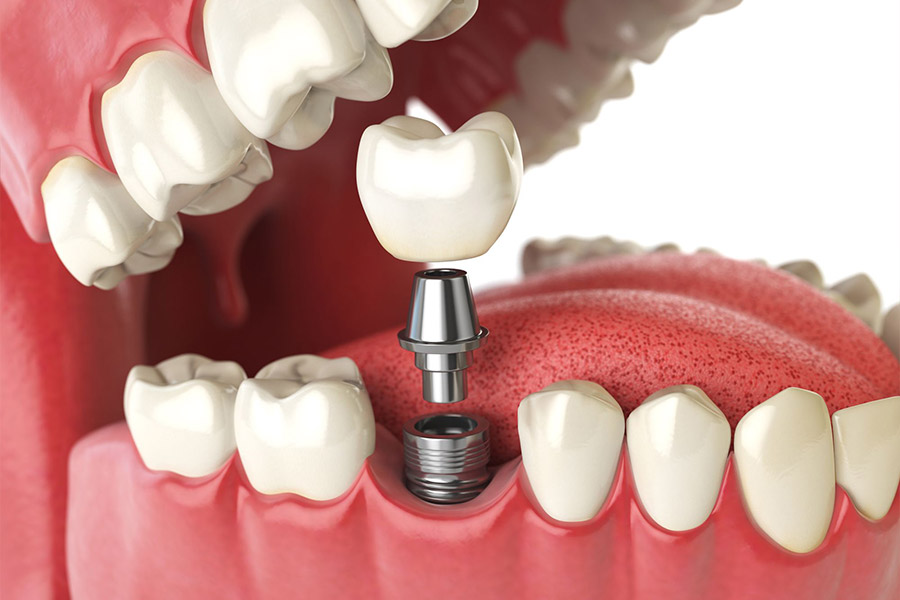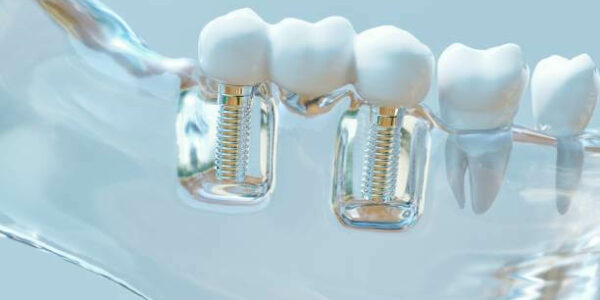Dental implants are a modern alternative to a missing tooth. They are the gentlest in the long run solution for the restoration of various defects of the dentition – from a missing tooth to completely edentulous jaws, as well as impaired masticatory function after tooth loss and aesthetics. Implants are titanium screw supports with a specific shape, which are wound at the site of the defect and are particularly suitable for integration into human bone. This can be done immediately after the tooth is extracted or later, if additional bone treatment is needed. Once placed in the jaw, they fuse with the surrounding tissues and act as a permanent replacement for the tooth roots, i.e., they become a stable support for one or more specially made artificial teeth.
What are dental implants?

What is implant treatment?
After a thorough examination of your teeth, our specialists will make a treatment plan, offering you all possible options and after a detailed discussion the most suitable for you solution will be chosen. Each implant treatment begins with an analysis of the clinical case based on general health status, radiographs and the condition of the area in the oral cavity where the implants will be placed. The next step is to plan treatment – with immediate or delayed loading of the implant.

Stages in dental implantology
Delayed loading implantation stages:
- implant placement;
- after 4 to 5 months – opening the implant and placing a healing stump;
- after 1 to 2 weeks – placement of a permanent structure that restores the missing teeth.
Stages of implantation with immediate loading:
- placement of the implant together with a superstructure with a temporary crown;
- after 1-2 weeks – placement of a permanent structure that restores the missing teeth.
In some clinical cases, there are no conditions for successful implantation due to the lack of sufficient bone volume to ensure primary stability of the implant or the lack of sufficient soft tissue to provide aesthetic restoration. This implies the inclusion of some additional surgical interventions to regenerate the missing tissues. The need for these manipulations is determined at the stage of analysis of the clinical case.

